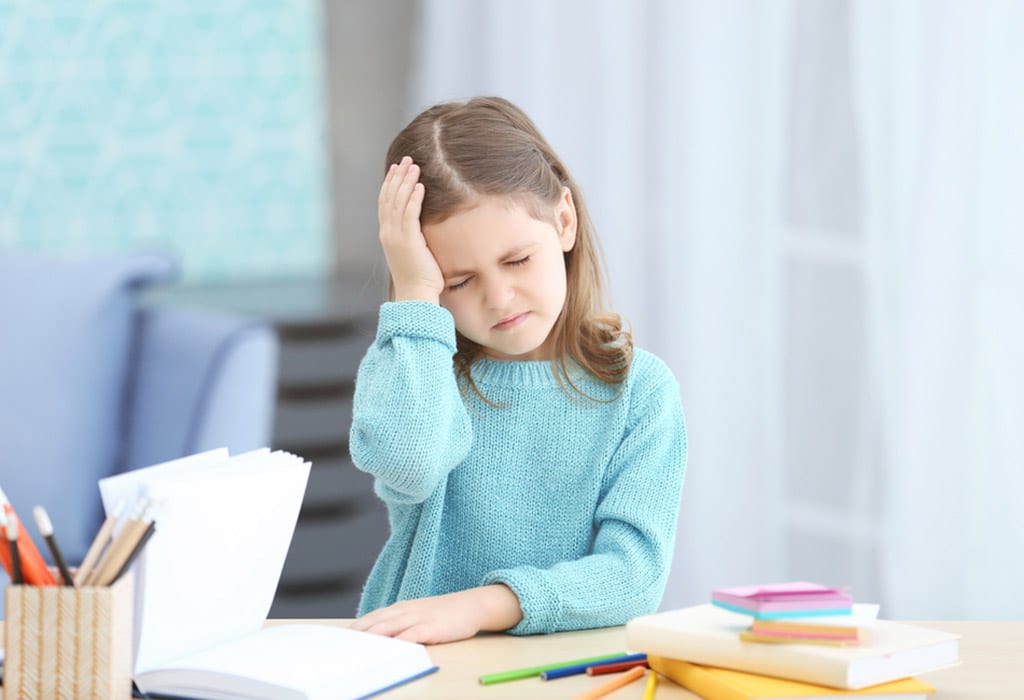Healthy Living
Do not ignore symptoms of headache among kids

Headache is a prevalent clinical ailment that is prevalent in all age groups. Even children and teenagers are not spared from its affliction. Researches have shown that approximately 75% of children of school-going age may experience a headache occasionally, and among them, 10% suffer from regular and chronic conditions.
Headaches can be classified into two broad categories: primary headache disorder, such as migraine, tension-type headache, chronic daily headache, cluster headache, paroxysmal hemicranias for which there is no contributing aetiology and the pain is caused due to certain intrinsic processes, and other trigeminal autonomic cephalism; and secondary headache disorder, that is, one which arises as a symptom of another ailment. About 58.4% of school-going children are the victims of the different forms of primary headache disorder. Headaches in children are often related to peer pressure, performance pressure or poor performances and decreased extracurricular activities.
Primary headaches can be diagnosed by a thorough and careful study of the medical history, and physical examination. Once the diagnosis established a particular type, appropriate and individually tailored treatment strategy needs to be determined. The objective of the treatment generally comprises abortive pain treatment, preventive treatment, and bio-behavioural therapy. A thorough apprehension of the child’s condition and quality of life is of utmost importance in order to design a comprehensive treatment strategy.
Since children often fail to elaborate their complaint, it can be difficult for a parent to fathom the seriousness of the problem. Children experiencing headaches are often snappy, irascible and violent. Also, children suffer from different types of headaches with different symptoms. A few common ones are as follows:
- Migraines: The World Health Organization has accorded the disability score of 0.7 to migraine and the studies show that it is one of the most enervative illnesses. The symptoms of migraine are:
- Throbbing pain in the head which worsens with exertion
- Nausea and vomiting
- Abdominal cramps
- Acute sensitivity to sound and light
- Tension-induced headaches: These are more common in children and teenagers as compared to adults. Often tension and fatigue combined results in a disruption in the normal blood flow to the tissues of the head and neck, thus causing a headache. The symptoms are:
- Pain on both sides of the forehead
- Stiffening of the muscles around the head and neck region
- Cluster headaches: Cluster headaches occur in a cluster of five or more bouts over a period of a day or even a week. Each bout can last for 15mithutes to three hours. The symptoms include:
- Excruciating pain on one side of the forehead
- Nasal congestion, watery eyes, fretfulness and agitation
Different triggers can cause headaches in children in the form of a migraine, tension-induced headache or a chronic headache, such as:
- The seasonal flu and viral infection, persistent sinus infection, or tonsillitis
- Stress and fatigue, sleep deprivation
- Excess physical exertion
- Eye Strain due to reading for long hours, watching TV for a long time and playing video games
- A head injury
- Tumour
- Emotional stress, peer pressure, performance pressure
- Brain infections like meningitis and encephalitis
- Food allergies to preservatives like nitrates or MSG
- Hunger and dehydration leading to a drop in blood sugar levels
Headache is a notorious health concern among kids today. Often a bout of headache is neglected without seeking medical intervention. Adolescents and even parents these days, prefer popping analgesics and paracetamols to visiting a doctor. This may be detrimental since it leads to the development of medication overuse headache which is resistant to most of the available treatments.
Often a head-massage or a cold compress, or a good sleep can bring some relief in case of non-chronic headaches. A balanced diet and outdoor activities should be practised. Also, it is of utmost importance to identify and avoid the headache triggers. A headache might be a symptom of some chronic ailment, neglecting which could lead to fatal consequences. So it is imperative to pay attention to your child’s complaint and seek a medical practitioner’s advice.
Contributed by Dr Sundar C Ingaleshwar, Consultant – Paediatric Intensivist, Columbia Asia Referral Hospital Yeshwanthpur





























